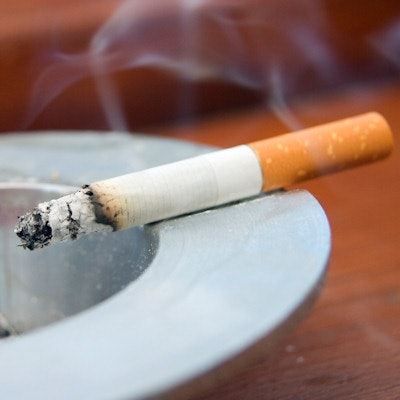
A simple two-question technique shows promise for helping clinicians assess an individual's eligibility for low-dose CT (LDCT) lung cancer screening (LCS), according to a research letter published August 7 in JAMA Network Open.
"[Patient] response to two yes or no questions showed high sensitivity for estimating pack-year eligibility for lung cancer screening, helping to identify pragmatic solutions for overcoming the challenge of assessing pack-years in routine practice," wrote a team led by Katharine Rendle, PhD, of the University of Pennsylvania in Philadelphia.
Lung cancer screening with low-dose CT (LDCT) has been shown to reduce mortality from the disease by 16% to 20%, the group wrote, and in 2021, the U.S. Preventive Services Task Force (USPSTF) expanded the pool of individuals eligible for screening, but screening uptake has continued to be low.
LCS eligibility is discerned in part through evaluation of a person's lifetime smoking intensity through a measure called "pack years," the group noted. Clinicians assess a person's pack years through open-ended questions -- an approach that has mixed success. What's needed is a tool that can streamline and focus pack-year assessment in an accurate way, Rendle and colleagues wrote.
The investigators developed and tested two yes or no questions intended to estimate pack-year eligibility for lung cancer screening. They completed this task in the context of a larger initiative at the University of Pennsylvania focused on increasing lung cancer screening compliance; this research used electronic medical record data from between 2018 and 2020 to identify patients between the ages of 55 and 80 with no history of the disease who were current smokers.
For this work, the group invited 303 patients to complete a lung cancer screening survey via email or telephone. Of these, most were between the ages of 55 and 64 (51.5%); most were white (72.6%); all were current smokers; and 30.7% reported less than 20 pack years of smoking, followed by 25.1% who reported more than 50 pack-years.
Patients were asked to respond to these two questions:
- If you add up all the years when you regularly smoked cigarettes, have you smoked for 20 years or more of your life?
- At any time in your life, did you regularly smoke one or more packs of cigarettes per day?
The investigators tracked sensitivity, specificity, positive predictive value (PPV), and negative
predictive value (NPV) of the questions, classifying "yes" responses into two categories: "liberal" (i.e., a "yes" to at least one question) and "restrictive" (i.e., a "yes" to both).
Of the survey participants, 65.7% responded "yes" to both questions, and most of these respondents were under the age of 65 (60.3%). Those eligible for lung cancer screening due to a 20 pack-year or more smoking habit made up 69.3% of the respondents, and most of these were 65 years of age or older (73.5%).
| Performance of a "yes"/"no" question protocol for assessing lung cancer screening eligibility | ||
| Measure | "Liberal" response: "Yes" to at least one question | "Restrictive" response: "Yes" to both questions |
| Sensitivity | 100% | 85.7% |
| Specificity | 18.3% | 79.6% |
| PPV | 73.4% | 90.5% |
| NPV | 100% | 71.2% |
This simple, two-question protocol for assessing lung cancer screening eligibility appears to be effective, the team noted.
"The restrictive classification could be used to equitably identify patients for direct referral to shared decision-making for lung cancer screening given the high PPV overall ... whereas the liberal classification could be used to efficiently exclude patients from lung cancer outreach given the consistently high NPV," it wrote.
The complete study can be found here.





















